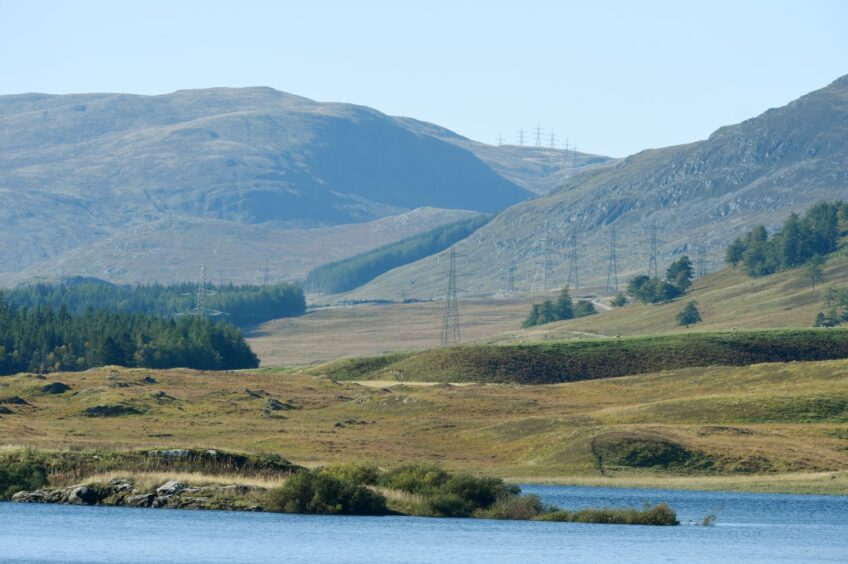
House prices along the Beauly-Denny transmission line have grown at similar rates to others in the region, suggesting the project’s pylons have had minimal negative effects on property values, new research has said.
BiGGAR Economics, on behalf of the Scottish Renewables, investigated house price trends of properties close to the Beauly-Denny electricity transmission line and compared this to the housing market trends of the wider local authorities.
House prices across the regions traversed by the power line – Highlands, Perth and Kinross, Stirling, and Falkirk – have surged since the project came online in 2015.
The report found that the value of properties along the Beauly-Denny line have matched this growth.
It also said that macroeconomic forces, such as interest rates, the cost-of-living crisis and the supply of houses, overpowered any adverse impacts caused by the transmission line.
The 400kV Beauly-Denny power line runs over 137 miles from Beauly, north of Inverness, to Denny near Falkirk. The line is supported by approximately 615 pylons with an average height of 53m.
Energy transition director at BiGGAR Economics Simon Cleary said: “While there may be varying opinions on pylons from both buyers and sellers, there was limited experience of the Beauly-Denny power line having any impact on house prices.”
However, the group’s report added that rising prices did not conclusively prove the power line had not had a detrimental impact on house prices.
Consulting with local real estate agents in the Beauly, Crieff, and Denny areas, BiGGAR reported that concerns about the visual impacts of transmission infrastructure are more likely to arise when a property is in very close proximity to pylons or a substation.
However, this differs based on the preferences of individual buyers.
Negative impacts
Head of grid and networks at Scottish Renewables Stephen McKellar said: “Demand for electricity is set to increase by 50% in the next decade and double by mid-century so effective electricity transmission is crucial if Scotland is to take advantage of its world class renewable energy resources.
“While it is inevitable electricity infrastructure will be visible, transmission companies always seek to minimise the impact of these projects where possible, so we are pleased that the Biggar Economics report is clear on the Beauly-Denny power line having no impact on house prices or the ability of homeowners to sell properties.”
Research has previously shown that most Scottish people support new transmission infrastructure, including electricity pylons.
However, there are still a vocal minority, especially in rural communities, that have voiced scepticism about the new pylons.
Activists have warned that overhead transmission lines are too difficult to hide for proposed mitigation methods or could damage the local environment.
In comments to Energy Voice, chairman of anti-pylon group Deeside Against Pylons John Rahtz said his group has estimated that SSEN’s Tealing-to-Kintore transmission line could reduce property values along its route by 5-30%.
“We have a number of instances where sales were cancelled altogether when the OHL was announced,” he added.
He pointed to a study from real estate company Galbraith Group which warned that transmission infrastructure could knock 10% off a property’s value, and potentially over 20%.
However, ScottishPower CEO Keith Anderson added: “If we want more homes – they need electricity. If we want more low carbon heating and transport – it needs electricity. If we want more jobs, business and industry – they need electricity.
“Uncertainty is unsettling and it’s in everyone’s interests that we move quicker. Faster planning within two years will deliver vital national infrastructure in the timeframe this country needs and minimise uncertainty for communities, developers and generators.”
Recommended for you

